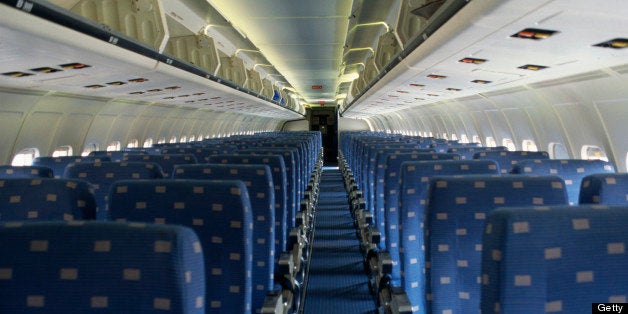
Something you may not know about this past weekend's airplane crash is that as Asiana flight 214 came in for a landing at San Francisco's International Airport, the flight attendants were conducting what's known as a 30 second review. A 30 second review is a silent review of emergency procedures anytime a flight attendant occupies his or her jumpseat. Flight attendants are trained to get passengers off of an aircraft within 90 seconds after the plane comes to a complete stop. Sara Nelson, Vice President of the Association of Flight Attendants, says in an evacuation every second counts, "That entire fuselage can burn up in 90 seconds so if you have wasted 10 or 15 seconds as everyone else is getting off the plane, you're potentially putting a fourth of the airplane in jeopardy of losing their lives in that scenario. That's how serious this is."
I know you've heard it before: "Flying is one of the safest things you can do." And this past weekend's crash with 305 of the 307 passengers surviving helps to prove that. According to an article by Discovery.com, you have a one in 1.2 million chance of being involved in a plane crash. If you did happen to be on that one in 1.2 million flight, you have a 95.7 percent chance of surviving it. Amazing, right? Flight attendants go through approximately six weeks of initial training, depending on the airline and 90 percent of their training is based on the safety aspects of flying. Everything from emergency evacuations to emergency medical care is covered and there is yearly training to keep flight attendants up to date and refreshed.
Surviving a plane crash comes down to surviving the initial impact and getting out fast. With this in mind, what can you do to up the odds of survival and is there a "safer" place to sit on a flight?
Coach Class: Discovery Channel staged a real plane crash in the Sonoran Desert, complete with pilots parachuting out in the last minutes! According to Discovery Channel's "Curiosity Plane Crash," rows one through seven are the "fatal" seats. I think we've all heard this before -- that it is safer in cattle class -- but I'm not giving up a first class seat if offered. One in 1.2 million? I'm a gambling girl!
Exit row seating: This one may seem obvious. Sitting at the exit row may ensure a quicker exit as long as your exit doesn't become blocked due to fire, smoke or water directly outside your viewing window. Also remember agreeing to sit here isn't just for the perk of extra leg room. You must be willing to assist in case of emergency.
The aisle seats: Sitting on the aisle seat is good if you have claustrophobia and/or you want to make sure you get off of an aircraft in a timely manner. Like the exit row, sitting on the aisle seat can mean a faster escape. Aisle seats are great for those who stay calm under pressure, too; if you are stuck at the window because someone is panicking on the aisle, it doesn't help anyone. Just be sure to help the panicky person at the window by taking them with you!
Of course, flying being as safe as it is, I still say worry less about the seat you choose, or are given, and pay more attention the flight attendant's safety demonstration. Know where your exits are located and always follow your crew members' instructions. I commend the flight attendants of Asiana flight 214 for a job well done!